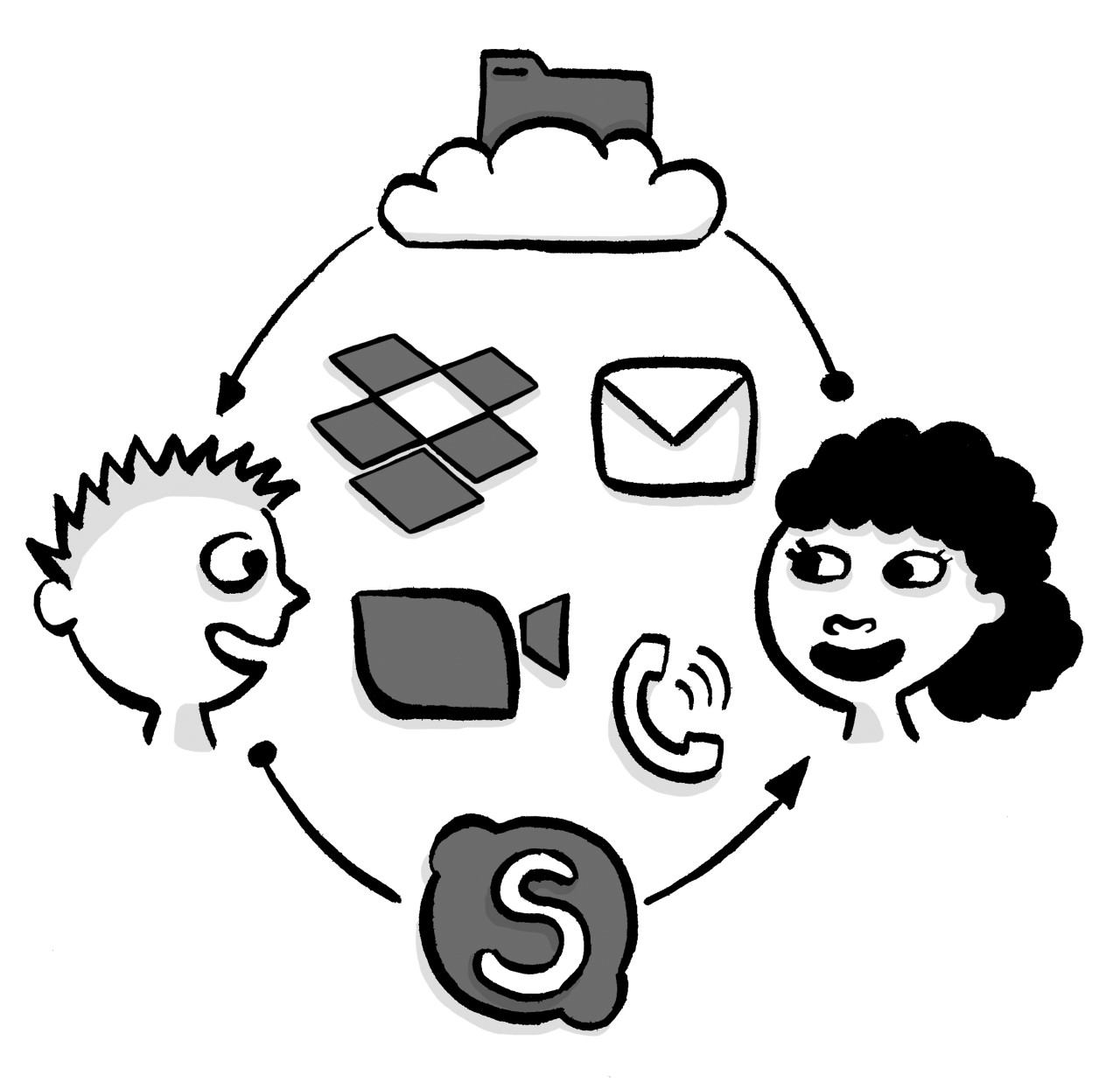By Petros Chamakiotis
Digital technologies have given rise to “new ways of working” (e.g. remote working, virtual teams) which come with their unique benefits and challenges. These new ways of working are known for the increased flexibility they offer to both the employer and the employee, the reduction of transportation costs and commuting times, as well as for providing the conditions for creativity and innovation by, for example, enabling access to geographically distant talent and expertise. However, these benefits come with unprecedented challenges, and workers need to have the necessary skills to come to grips with them in an effective and timely manner.
At present, the COVID-19 pandemic urges organisations around the globe to “go virtual” from one day to the next without the required preparations for such changes. The following practices can help organisations transform their operations as efficiently and painlessly as possible:
Maintaining a social context: Workers transitioning from the “traditional” to the “virtual” have the benefit of sharing a work history within an established social context. Knowing your colleagues face-to-face increases the levels of trust; a prerequisite for effective digital collaboration. In the digital environment, it has been found that people focus too much on work tasks, underplaying the importance of social interactions. Today’s technologies (e.g. synchronous technologies, social media) promote socialisation within and beyond the work environment. Consequently, virtual workers should not restrict themselves to work tasks, but they should place equal emphasis on social aspects of work in order to mitigate the lack of informal forms of socialisation that typically take place in face-to-face environments.
Tip: Start your Skype meeting with an informal chat over coffee, focusing on non-work issues, as this may reduce the perceived geographical distance between workers!

Selecting the right technologies: Zoom, Microsoft Teams, Dropbox are some of the numerous technologies that have been developed to support different types of digital work. Some are synchronous in nature, allowing for real-time communication (e.g. Skype), while others are asynchronous (e.g. Dropbox) and have been primarily designed for storing, visibility, and sharing purposes using cloud computing. Though synchronous communication might feel more natural, it may not always be the right tool, nor is it sustainable to be on lengthy Skype meetings for all types of tasks.
Tip: Select the most appropriate technology for each type of task; for example, a synchronous chat on Skype could work best for sharing ideas, whereas sharing files in an asynchronous online space may be best for filing purposes! The audio and video functions offered by modern synchronous technologies can mitigate the negative effects associated with the lack of physical proximity. Further, make sure that everyone knows how to use the selected technologies!
Adopting alternative (e-)leadership styles: It has been found that leadership in the digital context takes different forms:
- Centred leadership: This leadership style is commonly found in traditional (physically collocated) working environments, whereby one person has the overall responsibility for a project from start to end. In digital environments, a centred leader often coexists with another type of leadership, such as the ones presented below.
- Emergent leadership: Although an appointed leader may already be in place, in a digital environment we see people emerge as leaders during the lifecycle of a project, either to step in and help with an unexpected task, or because they have expertise in a specific aspect of the project. It is important to allow and encourage colleagues to emerge as leaders, although they may not have been formally appointed as leaders upfront.
- Shared leadership: Due to the geographical dispersion characterising digital work, we often see that different individuals lead different stages or different aspects of the project. This is often due to their specific area of expertise and it is usually successive in nature, with one leader handing over the baton to another person once they have completed their task.
- Co-leadership: While shared leadership is successive in character, co-leadership is a leadership style whereby two or more teammates assume the responsibility for two different tasks (or components of the project) at the same time. Therefore, co-leadership is simultaneous, rather than successive.
Tip: We have to be open to new leadership styles that may be different from those found in traditional environments. The above styles may work on their own or in combination with one another. For example, a project may have a centred leader who is responsible for the administrative aspects of the project, alongside other leaders (appointed or emergent) at different stages or simultaneously for different tasks of the project.

Creating new work-life boundaries: We often make the mistake of letting our work life penetrate our non-work life (e.g. personal life, family life, social life) when working from home. While, on the one hand, digital technologies allow us to work anytime/anywhere, we often find ourselves in paradoxical situations whereby we end up working everywhere/all the time. As a result, frequent problems when working from home include extended working hours and reduced wellbeing for ourselves and our families. Although smartphones and tablets blur the boundaries between work and non-work, it is essential that we somehow restore those boundaries in the context of remote working. There are four different ways we can achieve that:
- Deciding where to work: Although this may not always be possible if our homes have not been designed to have a space dedicated to work, it might make sense to designate a specific space in our homes within which we can conduct our work. It is important that we establish rules preventing us from working outside that space.
- Deciding when to work: One of the benefits of working from home is that we may be able to work at our own pace, defining ourselves the timeframe within which we will be working. For example, an 8-hour working day can be non-consecutive, with 5 hours of work in the morning and 3 hours in the evening, in line with family responsibilities and personal preference.
- Deactivation or silencing of notifications: Working from home does not mean that we should always be available to respond to work queries. Receiving constant work-related notifications on our mobile devices may disturb our non-work life (and that of the people we live with), reducing our sense of wellbeing and ultimately negatively impacting our overall performance when that is most needed; during our working day, that is. Fully deactivating all work-related notifications (e.g. our work emails) on our personal devices – or using separate devices for work and non-work altogether – may help to achieve better management of the boundary between work and non-work in the digital context.
- Different devices for different purposes: Working from home does not mean that we should be using our personal devices – originally meant for individual use – for work purposes. Using, for instance, a work laptop for work purposes may help us establish another boundary whereby – by switching off the work laptop – we essentially put an end to our working day, preventing it from penetrating our non-work life.
Tip: Think what kind of boundary you feel more comfortable with and – most importantly – stick to your decision!
♣♣♣
Notes:
- This blog post expresses the views of its author(s), not the position of LSE Business Review or the London School of Economics.
- Illustrations by Camille Aubry, NOT under Creative Commons. All Rights Reserved.
- Featured image by Ben Kolde on Unsplash
- When you leave a comment, you’re agreeing to our Comment Policy





